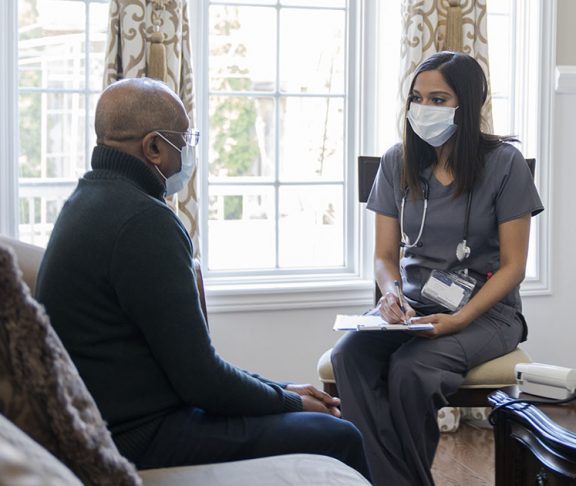Healthcare delivery continually evolves. Looking to the past and how care was delivered in homes and communities may lead us to a better future.
Before there were hospitals, care of the sick, injured, and dying was done in the home. Most of the care was administered by family members or friends at the direction of a community physician. Eventually, hospitals were constructed, and medical and nursing care was provided where resources were readily available.
Hospitals and hospital systems have continued to care for patients inside their walls for decades, however, the complexity of patient care and the associated costs continue to rise and are not sustainable.
Healthcare in the United States is increasingly costly because the system is not standardized. A system that is revamped to be more standardized would help drive costs down, and streamline billing and other payment processes.
Changed times
Patients who are hospitalized today have multiple comorbidities that require more nursing and medical care to treat and stabilize. Many patients with chronic conditions lack the resources and support needed in their communities to reduce the frequency with which they are admitted to the hospital.
There are many reasons for this, and there is a high likelihood they are related to social determinants of health (SDOH), which include economic stability, education, social and community context, health and healthcare, and neighborhood/environment.
In the past several years, many major organizations have called on healthcare providers and nurses to address SDOH to provide better, more equitable care to all people, and national initiatives like The Future of Nursing 2020-2030 are underway.
In-home visits and telehealth
As Americans age, illnesses become more chronic and complex, and healthcare costs increase, so healthcare providers are looking for better ways to provide care. One of those solutions is a return to providing care to patients in their homes. This may take two forms: in-home visits from healthcare personnel and telehealth, which became a crucial care delivery method when the COVID-19 pandemic began. These methods are often used simultaneously.
In-home visits and telehealth will decrease costs associated with inpatient care. Patients would only go to the hospital if they have an emergency, need surgery, or require a more intensive treatment or test, or sophisticated care. Treating patients at home also reduces exposure to hospital-acquired conditions, and provides patients a familiar and comfortable environment in which to receive care.
Helping people stay in their homes as they age is of paramount importance to their independence and quality of life. As technology advances to include improved connectivity of devices, remote patient monitoring, and expanded telehealth, creating smart homes that help people overcome the obstacles they face due to aging and chronic disease will allow families to stay together and decrease the costs of healthcare.
However healthcare evolves in the coming years, it will be imperative that the hospital of the future promotes and ensures equitable care for all. Healthcare leaders must build these structures with an eye to patient populations that do not have the infrastructure necessary to be cared for at home, and ensure no one is left behind.

